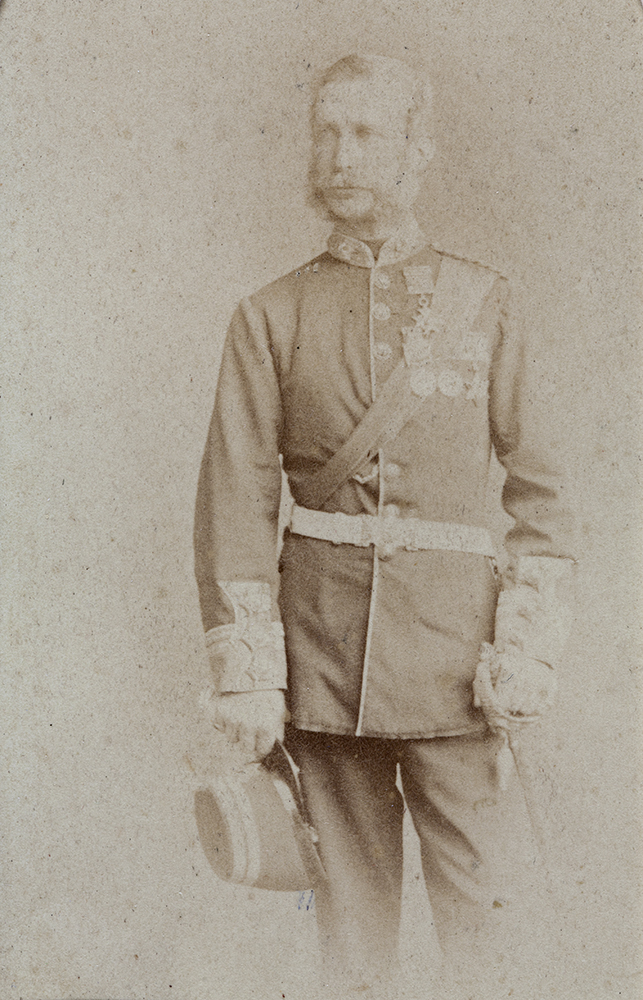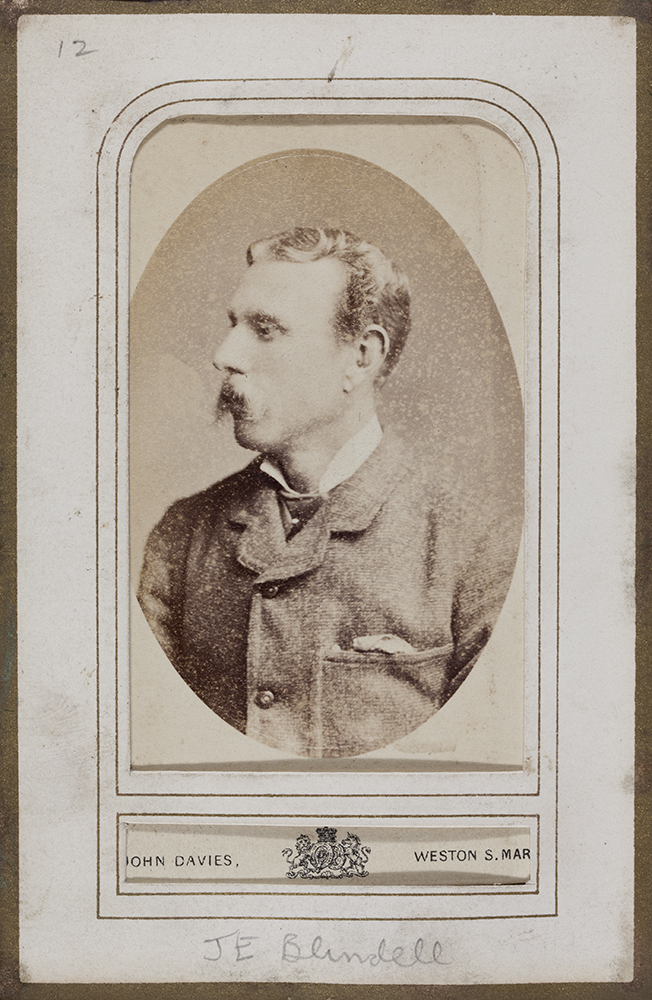Following the copying of the Royal Hampshire Museum’s collection of China- related photographs by the Historical Photographs of China project, Dr Andrew Hillier shows how these can reveal the personal aspects of a regiment on campaign in empire.
First created and patented by the French photographer André Disdéri in 1854, by the 1860s, cartes de visite had become an early form of social media, connecting family and friends, as well as constituting a means of networking. Within the empire, they were particularly popular as a way of maintaining links between home and abroad and were also regularly exchanged within the sociable milieu of a regiment. As such, they provide an important source of family, imperial and military history.
The Royal Hampshire Museum is fortunate in having an album of cartes, which belonged to an officer of the 67th, who served in China between 1860 and 1864, and contains pictures of his regimental colleagues. It therefore, supplements the Museum’s China collection which I discussed in my previous blog. We are grateful to the Museum for permitting us to copy these images which can now be accessed here. See also the George Atchison Collection for further photographs relating to the regiment’s China campaign.
According to an August 1975 annotation by the museum’s archivist, C. D. Darroch, the album of cartes was owned by Lieutenant-General Sir John Wellesley Thomas, KCB (1822-1908), although on the brass cover it is stated that it was ‘presented’ by Thomas (presumably to the regiment) in January 1867. Either way, he seems to have been the originator of the album which has, apparently, remained in the regiment’s possession ever since. Thomas who had already had a distinguished military career before serving with the 67th in the North China campaign in 1860. Wounded when commanding a half-brigade in an attack on the Taku Forts, he was mentioned in dispatches and appointed Companion of the Bath.
Two years later, promoted to colonel, Thomas captured Jiading (Khading) during the Taiping rebellion and left China when his regiment sailed for India in 1864, remaining its commanding officer until 1872. He retired in 1881 and was appointed Colonel of the Hampshire Regiment in 1882. He never married.
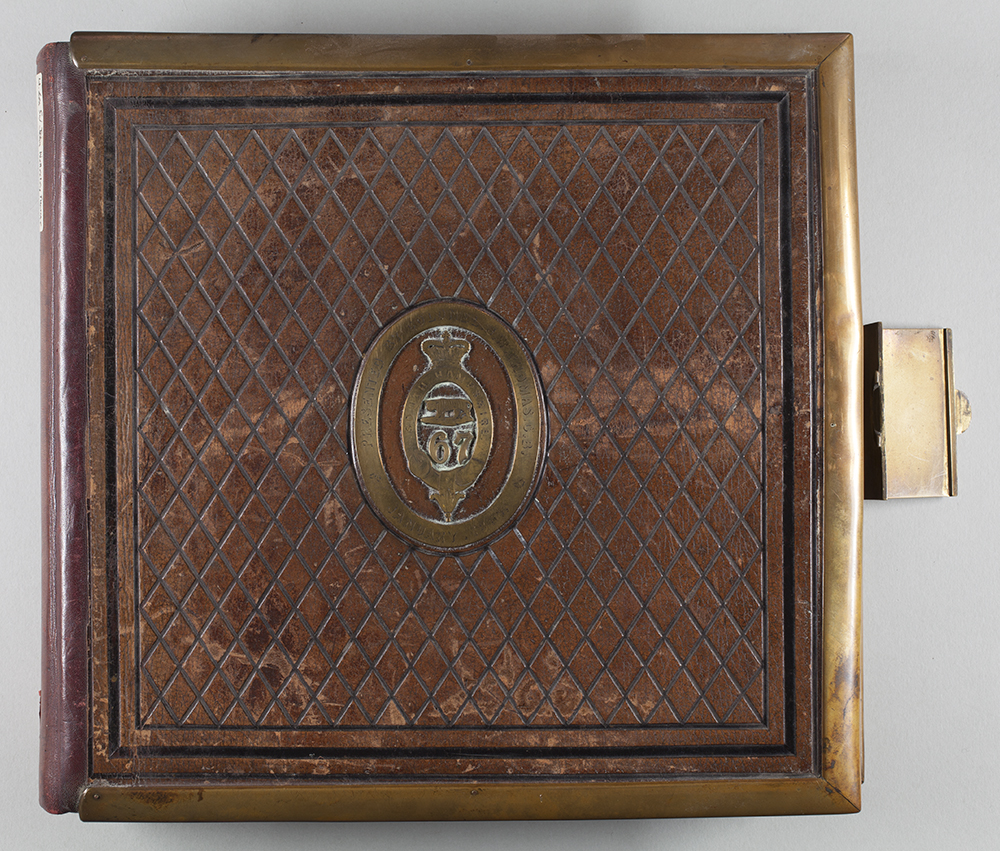
Album cover. Royal Hampshire Regiment Museum ref: M1503.
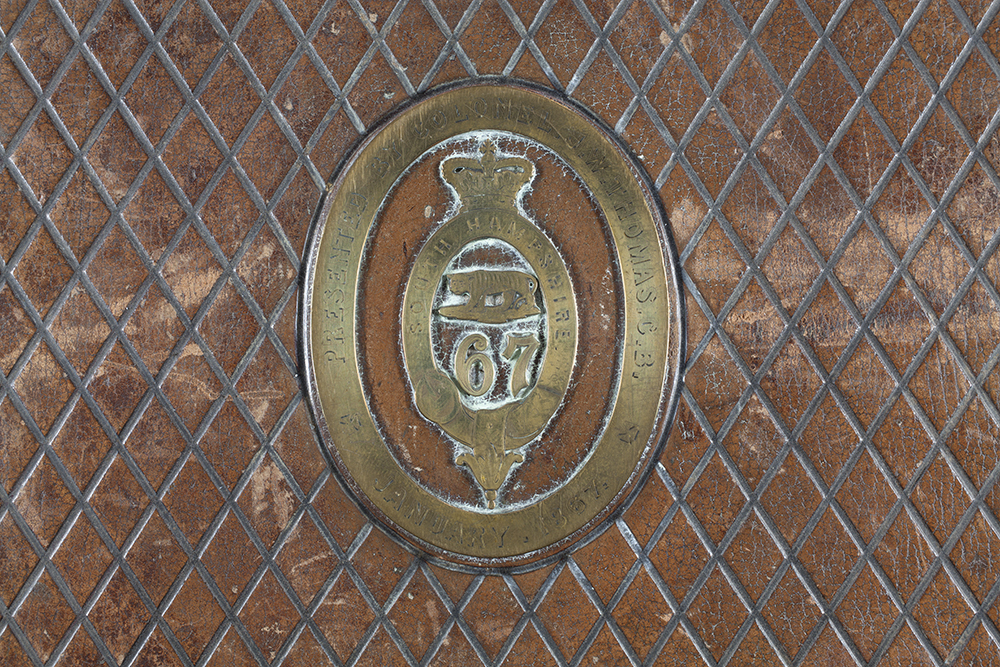
Detail of album cover, with text: “PRESENTED BY COLONEL J.W. THOMAS. C.B. / JANUARY. 1867 / SOUTH HAMPSHIRE 67.”
There are some seventy cartes, six on each page –some have been removed and there are blank pages which may have previously held cards. Plainly the pictures were taken over a long period, some in Britain and some in India, where the regiment was stationed from time to time. Some seem to be personally signed which suggests they may have been exchanged as tokens of friendship during Thomas’ career. There are some twenty cartes of officers who, on the basis of their service records, we can assume served in China between 1860 and 1864, when the regiment sailed back to India.
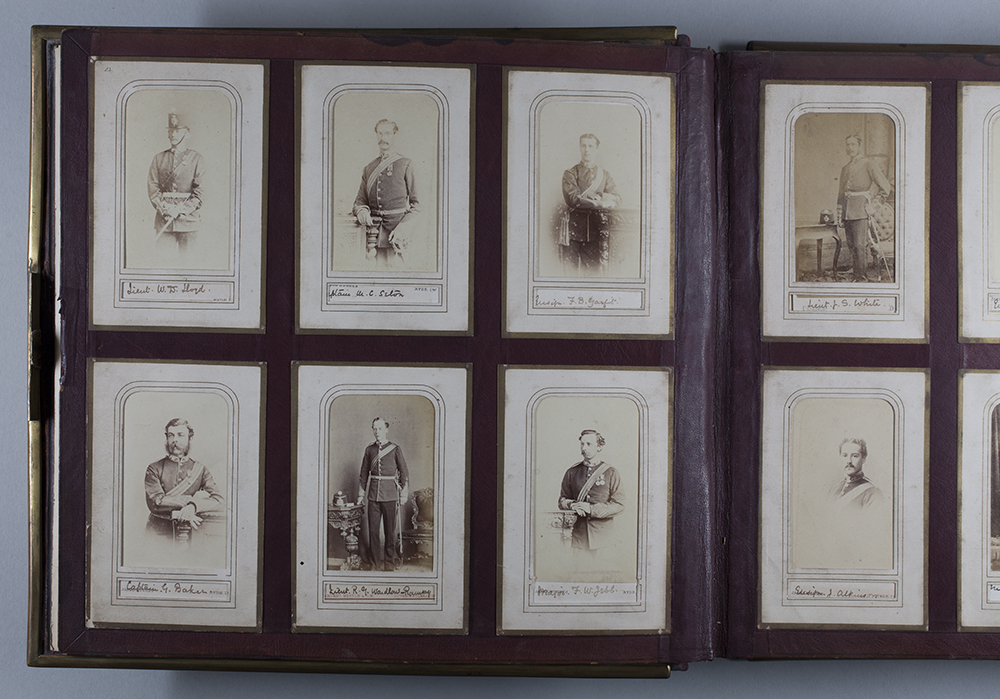
Page of cartes de visite in Royal Hampshire Regiment Museum album M1503.
The album includes a picture of John Eyles Blundell who, as we saw in my previous blog, assembled his own collection of photographs relating to China
The images are due to be made accessible on the museum’s web-site – and it is hoped that this may trigger a response from some of their descendants.
It would be interesting to know whether other regiments have similar albums of cartes. These pictures and the other images of the China campaign which can be viewed on Historical Photographs of China, together with the accompanying journals, show how this rich resource can provide a vivid picture of a regiment in empire, both in its military and in its more personal aspect.

